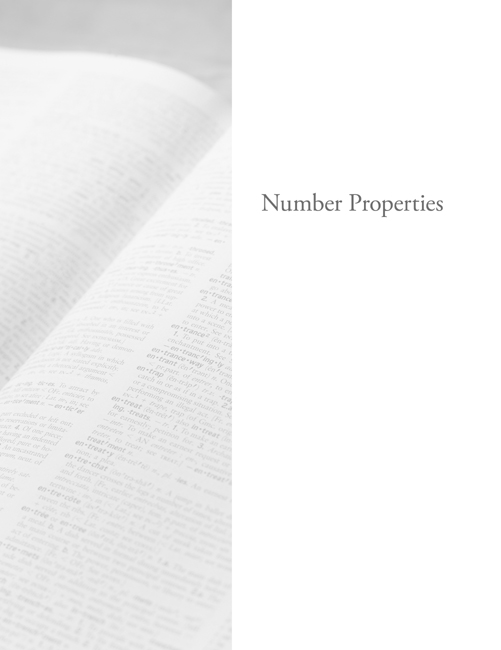
The math section on the GRE is as much a test of reading comprehension as it is a test of math. Many of the problems you will see involve pieces of information given to you in prose format. Good readers read quickly and holistically, reading for overall meaning but not necessarily reading every word. This is how most of you were trained. Unfortunately, this method does not work so well on the GRE when you are under time pressure, you’re reading off a screen (not a printed page), and every word counts. When you are reading math problems, mouth the words to yourself and use your finger or your pencil to track the text on the screen. It may feel silly, but it will protect you from the reading errors that are inevitable on a four-hour test.
You must also know your math vocabulary. Your ability to get the correct answer on many questions will rest entirely on your knowledge of key math terms. If you have a question that states, “Set A consists of consecutive, single digit, non-negative, even integers,” you will have one answer choice that contains 0 and one that does not. Which one is correct? Is zero positive or negative? Is it odd or even? Is it an integer? In order to maximize your score, you must know your math vocabulary.
Here is a list of common math terms tested on the GRE.







(Click here to view a larger image.)
For any GRE problem without a variable, you can always calculate the answer. In fact, ETS will always give you that option. You will be able to calculate your way to the answer, but it will take you 1−2 minutes and increase your opportunity for error tenfold. Instead, look for shortcuts. Remember the GRE is a test of thinking, not of calculating. Here are some shortcuts that will help expedite your thinking.

If you have these rules memorized, you won’t have to try out examples to figure out the problem; you will have the answer in a matter of moments with nary a need to calculate. This is powerful.
Divisibility is another area where you can use shortcuts. You will rarely need to know exactly how many times one number can be divided by another. Often, all you need to know is whether one number can be divided by another.

Occasionally you will see questions that seem to relate to rules of divisibility but that involve numbers too big to calculate. For example, try this question.
Which of the following numbers will divide evenly into 1211: 24, 36, 211, 222, 311, 312, 40, or 482?
Clearly, you are not going to calculate each of these answer choices. Therefore, when in doubt, expand it out, but do so using prime factors. Think of the question as a fraction that you will reduce. On the top you have (2 × 2 × 3) 11 times. The first answer choice, 24, can be broken down into (2 × 2 × 2 × 3). You can cancel each one of the numbers on the bottom of the fraction with the equivalent numbers on the top, so 24 will divide evenly into 1211. Now try the other 7 answer choices.
36
Yes. You can cancel out two 2’s and two 3’s. No problem.
211
Yes. You will have more than eleven 2’s on the top that you can cancel with the 2’s on the bottom. No problem.
222
Yes. There are two 2’s in every group on the top of the fraction and you have 11 groups. That means you will have twenty-two 2’s on the top and twenty-two 2’s on the bottom. They will cancel out.
311
Yes. You will have eleven 3’s on the top and eleven 3’s on the bottom. They will cancel out.
312
Nope, you will be one 3 short. You will have eleven 3’s on the top of the fraction, but twelve on the bottom. It won’t work.
40
Nope. 40 breaks down to 2 × 2 × 2 × 5. The 2’s will cancel out, but there’s no 5 on the top to cancel with the 5 on the bottom.
482
Yes. 48 breaks down to 24 × 3. When you square that you get 28 × 32. There are enough 2’s and 3’s on the top to cancel with the 2’s and 3’s on the bottom.
![]()
![]()
When you have a division problem with numbers too big to calculate, use prime factors to figure out how many times one number will divide evenly into the other.
Simply put, absolute value is the distance from zero on a number line. It doesn’t matter if you are moving in a positive direction or a negative one. Absolute value tends to show up on Quant Comp questions, because it’s easy to confuse positive and negative numbers. Just remember to plug in both positive and negative numbers when you have a variable inside absolute value brackets.
The GRE will test the order of operations, and there will be a wrong answer choice waiting for you if you get the order wrong.
Here’s how it works.
![]()
For more practice and a more in-depth look at The Princeton Review math techniques, check out our student-friendly guidebook, Cracking the GRE.